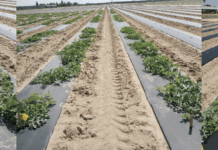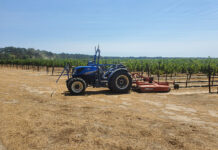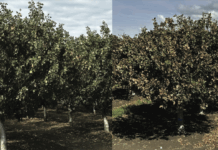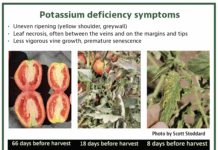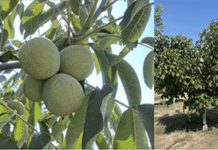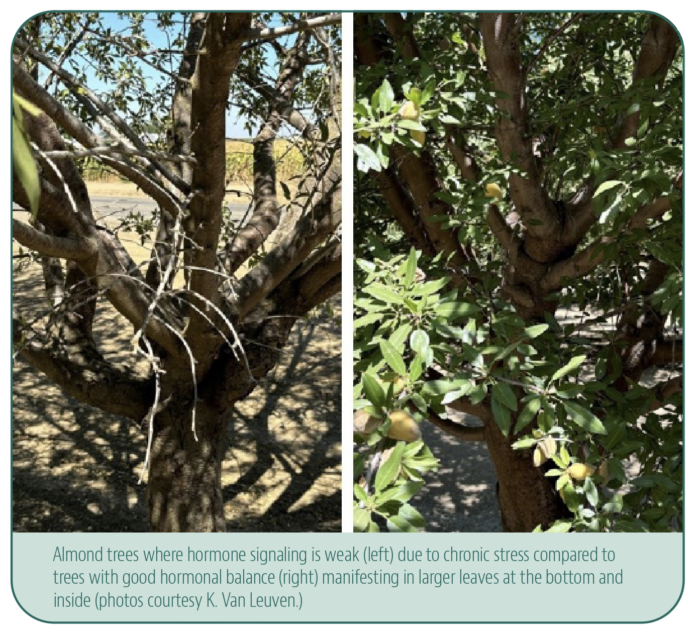
How can we grow great crops when conditions are not great? Crop performance is a combination of both managing stress and supporting plant growth. Plant systemic resistance to injury and stress has been studied for 100 years. Recently, gene mapping and molecular chemistry are helping us to understand these defenses and explain how signaling and feedback mechanisms conduct plant health. In some cropping years, environmental factors have a more negative impact on the crop than the typical pests and diseases we are more prepared to manage. The question in a lot of growers’ minds is how to harden crops in the field to be more resilient when it comes to problems like drought, heat, cold, salinity or other stress.
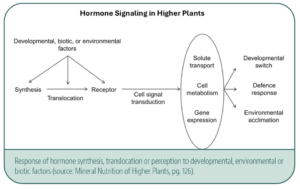
Biostimulants are defined as crop inputs for improved nutrient use efficiency and tolerance to environmental stress. These materials work systemically to keep the metabolic machinery in the plant functioning even when conditions in the field may not be favorable. By definition, biostimulants can improve crop nutrition regardless of the small amounts of essential nutrients in them and the low rate per acre at which they are applied. They help the crop pick up and assimilate nutrition. Some definitions of biostimulants include phrases like “botanically active substances” and refer to improved “crop quality traits.” These benefits provide economic value to the grower.
The genetic code of plants is set up to respond to the environment. In the planted seed, depending on conditions, when water is imbibed and hormone degrades and the hormone balance changes, the embryo activates and biochemical processes start up the machinery of growth, and the seed sprouts. Growth is affected when hormone balance changes. More hormones are endogenously synthesized when the cells of new plant tissues are divided and grow. These hormones translocate and accumulate in the plant, or they can also degrade or become diluted. As the hormone balance and concentration changes, plant growth can speed up, slow down, transition to a different physiological stage, or the plant can set up defenses to create a response to conditions in the field.
Nutrients are not picked up and used for growth unless they are called for by signals inside the plant. A soil test can tell us all the essential minerals are available and ready to be taken up, but the uptake of nutrients will not happen without hormone signaling to activate metabolism and growth processes. Biostimulant products can help create signaling for stress management or growth processes when hormones are in short supply or not naturally present.
Source-Sink Relationships in Plant Growth
New leaves and other organs are sinks for energy and nutrition, which need to be supplied by more mature parts of the plant. A new leaf will size according to available growth hormones. It must develop its own organelles, pigments and vascular system. When fully developed it changes from being a sink to becoming a source for sugars and other solutes, which can be transported to new sinks calling for nutrition. Sinks can be leaves, buds, fruits, shoots or roots, and they can be strong sinks or relatively weak.
In the textbook Mineral Nutrition of Higher Plants, first published in 1986 by Horst Marschner, the authors thoroughly discuss the role of plant hormones in source-sink relationships in the fifth chapter. They discuss yield as a result of nutrition, light and dark cycles in metabolism, phloem loading and unloading, and the initiation and development of reproductive organs. It discusses how these source-sink relationships depend on the concentration and balance of hormones. And it discusses the role of nutrition and plant stress in affecting endogenous hormone concentrations. Knowledge of these principles predates any use of the term ‘biostimulant’ by 10 to 20 years. It was also long before gene mapping and molecular chemistry were able to tell us these processes are controlled by gene activity. We are now at a time when biostimulant products are the primary tools being studied and used to manage source-sink relationships in commercial agriculture.
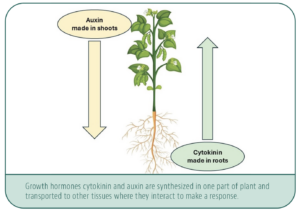
Small Leaves and Weak Sinks
Small leaves and weak sinks make average crops. The first factor predetermining the size of a leaf or of a fruit is the number of cells in the organ. Cell division and cell growth depend on hormone balance and concentration. When conditions or vigor at the time of flowering and fruit set are limiting the hormones available for cell division, the potential size and quality of the leaves and fruit will also be limited.
For permanent crops, especially some deciduous crops like almonds and tree fruit, the flowering and fruit set happens right after bud-break, before the leaf canopy develops. The tree starts out operating on reserves that were stored before dormancy. Temperatures and weather conditions during bloom make flowering and fruit set unpredictable and affect the development of the leaf canopy. It is no wonder growers have adopted the use of seaweed and other biostimulant products to help improve their crops in these initial stages.
As leaves emerge, the photosynthetic capacity of the tree has to catch up after bloom. The demand for hormones, photosynthates and nutrients is high. Where hormone concentration is low, cell division will be reduced. Cell division determines cell density and sink strength for attracting nutrient resources for growth. Cell division precedes cell growth and cell density in the fruit and seeds and is one of the main factors in the quality of the crop.
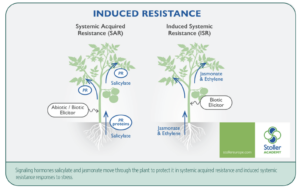
Systemic Signaling
Simply stated, hormones are produced in one part of the plant and transported to other tissues where they interact to make a response. Cytokinin produced in the root tips travels up with the water column to the tissues in the top where it contributes to cell division. Auxin produced at apical growth points is translocated downward and influences and initiates growth along the way. When auxin makes it all the way down to the roots, it causes branching and initiates more root tips, which in turn makes more cytokinin to flow up again to the top. Under good conditions, this feedback loop continues, and the crop progresses through each stage of growth as driven by the genetic code.
When stress impacts plant growth, other signals raise the defenses, and imbalances occur. Growth is slowed or interrupted. Stress signaling molecules, including ethylene, ABA, salicylic acid, jasmonates, terpenes and others, work to modulate growth processes and harden the plant for survival. Some stressors act to reduce photosynthesis, respiration and growth. They can damage cells with stress hormones, biproducts of incomplete respiration, oxidation and cellular breakdown. Wilting and senescence occur.
Restoring and Maintaining Balance
Healthy plants have evolved with multiple protective stress responses built in. Stress can strike aboveground or belowground. If either the roots or the canopy suffers, to the degree that it suffers, biofeedback signaling will be sent to the other parts of the plant, and the plant makes adaptations. Studies on acquired and induced resistance to stress have explained the systemic mechanisms of plant defenses. Like other processes in the life of the plant, defense against stress is also coded in the genes and uses hormone signaling.
Jasmonic acid and salicylic acid are hormones which act chemically in their own pathways and in crosstalk with other biochemicals to defend the plant against stress in a variety of ways. They regulate proteins and enzymes used in both defense and recovery from stress. Long ago, the stress responses involving these signaling compounds were given the names systemic acquired resistance and induced systemic resistance.
ABA is probably the main defense hormone, but it works by putting on the brakes and trying to preserve plant resources until conditions are better for the plant. Like cytokinin, it is produced in the roots and travels up the water stream to all parts of the plant. It works with calcium and potassium as a regulator of transpiration in the stomata. During stress and at the end of the life cycle, it reduces the growth hormones and terminates growth.
Stress comes to crops in all forms these days. Understanding the signaling part of the growth processes and the signaling that occurs with stress at different crop stages helps us to know how to build in some resilience to yield- and quality-limiting events. We have tools when setbacks occur. Biostimulant products work as natural partners to proactively preserve yield, or countermeasures in case of stress events, to enhance or preserve the genetic potential of the crop. A single application of a biostimulant product may or may not be a game-changer (seed treatment can be a tremendous advantage) but when some of these products are layered together in season-long programs with good grower-standard practices, the resulting crop performace can be significantly better.


